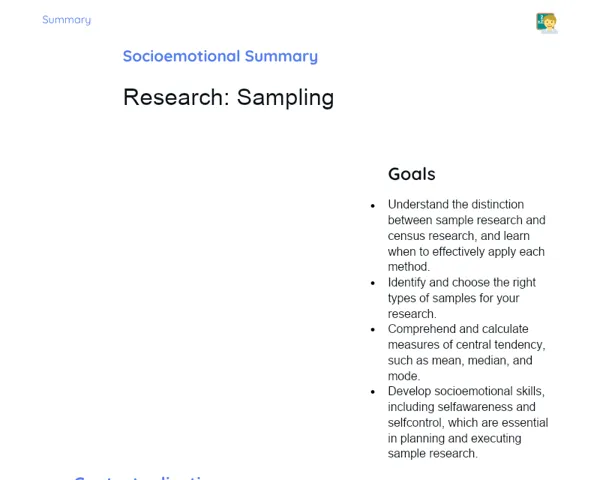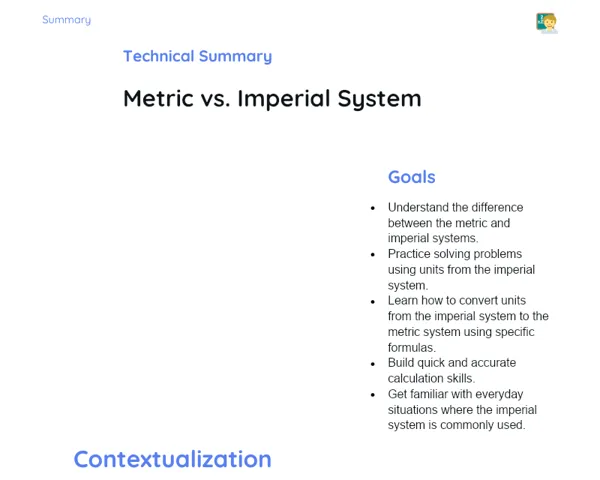Summary Tradisional | Matrix: Operations
Contextualization
Matrices are mathematical structures used to organise numbers or expressions in rows and columns, forming neat rectangular arrays. They find extensive use in diverse fields such as Mathematics, Physics, Economics, Engineering, and Computer Science. In Mathematics, matrices serve as invaluable tools for solving systems of linear equations and carrying out geometric transformations. In other areas, they play a significant role in representing data, modelling real-world problems, and developing sophisticated algorithms.
When it comes to matrix operations, it is important to learn how to carry out addition, subtraction, and multiplication of these arrays. Each of these operations comes with its own set of rules and conditions which need to be followed strictly for accurate calculations. For example, addition and subtraction require that the matrices involved have the same dimensions, while multiplication demands that the number of columns in the first matrix matches the number of rows in the second. Getting a good grasp of these operations is essential for applying matrices to various practical problems and scenarios.
To Remember!
Matrix Addition
Matrix addition is an operation that can only be done when the matrices in question share the same dimensions. This means that both matrices must have an identical number of rows and columns. The process involves adding the corresponding elements from each matrix, so that the element at position (i, j) in the resulting matrix is simply the sum of the elements at position (i, j) from the original matrices.
This operation is both commutative and associative, implying that the order in which matrices are added does not affect the end result and the addition can be performed in any sequence. For instance, if A and B are two matrices, then A + B equals B + A and (A + B) + C equals A + (B + C).
Matrix addition has several practical applications, such as in computer graphics for combining geometric transformations, and within linear algebra while solving systems of linear equations. A clear understanding of matrix addition is essential to explore these and other real-life applications.
-
Matrix addition is only possible when both matrices have the same dimensions.
-
The operation is carried out by adding the corresponding elements of the matrices.
-
Matrix addition is both commutative and associative.
Matrix Subtraction
Just like addition, matrix subtraction can only be performed when both matrices have identical dimensions. Here, the operation involves subtracting corresponding elements of the matrices such that the element at position (i, j) in the resulting matrix is the difference of the elements at the same position in the original matrices.
It is important to note that unlike addition, matrix subtraction is not commutative. This means that the order in which you subtract the matrices will change the outcome. For example, if A and B are matrices, then A - B does not equal B - A. However, subtraction does exhibit associativity, allowing the operation to be done in any sequential order. In other words, (A - B) - C equals A - (B - C).
Matrix subtraction finds its use in fields such as data analysis — for computing differences between data sets — and in engineering for control and optimisation problems. A solid understanding of matrix subtraction is indispensable for applying this concept to real issues.
-
Matrix subtraction requires both matrices to have the same dimensions.
-
The operation is performed by subtracting corresponding elements.
-
Matrix subtraction is not commutative, but it does follow associativity.
Matrix Multiplication
Matrix multiplication is a bit more complex compared to addition and subtraction. To multiply two matrices, the number of columns in the first matrix must be equal to the number of rows in the second matrix. The element in position (i, j) of the product matrix is created by summing the products of corresponding elements from row i of the first matrix with the elements from column j of the second matrix.
It is essential to understand that matrix multiplication is not commutative, meaning changing the order of the matrices will affect the result. For example, if A and B are matrices, then AB is not the same as BA. However, multiplication is both associative and distributive, which means the multiplication can be performed in any order, and it obeys the distributive property over matrix addition. Thus, (AB)C equals A(BC) and A(B + C) equals AB + AC.
Matrix multiplication is widely applied in various disciplines, from solving systems of linear equations to transforming coordinates in computer graphics, and even in machine learning algorithms. Mastery of matrix multiplication is crucial for tackling these advanced applications and solving complex problems.
-
Matrix multiplication is possible only when the number of columns in the first matrix matches the number of rows in the second.
-
This operation is carried out by summing the products of elements from rows of the first matrix with those from columns of the second.
-
Matrix multiplication is not commutative, though it is associative and distributive.
Properties of Matrix Operations
Matrix operations come with several important properties that determine how these operations can be carried out and combined. In the case of matrix addition, both commutativity and associativity are present, meaning that rearranging the matrices does not change the final result, which makes calculations more straightforward. With matrix subtraction, while associativity holds true, the operation is not commutative, so the sequence in which the matrices are subtracted is important.
For matrix multiplication, it is crucial to note that commutativity does not apply, and the sequence in which the operations are performed can affect the outcome. However, multiplication is associative and distributive, so these properties allow one to perform the operations in any order and even distribute the multiplication over addition. These properties are essential when working with matrices in more complex calculations and practical applications.
A clear understanding of these properties is fundamental for ensuring that matrix operations are executed correctly and efficiently. It helps simplify calculations, makes problem solving more direct, and opens up the door to applying these techniques in various fields like linear algebra, computer graphics, and data analysis.
-
Commutativity applies to matrix addition but not to multiplication.
-
Associativity holds for matrix addition, subtraction, and multiplication.
-
Distributivity is applicable in matrix multiplication over addition.
Key Terms
-
Matrix Addition: An operation that sums corresponding elements of matrices having identical dimensions.
-
Matrix Subtraction: An operation which subtracts the corresponding elements of matrices with identical dimensions.
-
Matrix Multiplication: An operation whereby matrices are multiplied, requiring the number of columns in the first matrix to be equal to the number of rows in the second.
-
Commutativity: A property that allows the order of operations not to affect the result (applicable to addition, but not to multiplication).
-
Associativity: A property that permits operations to be performed in any order without affecting the outcome (applicable to addition, subtraction, and multiplication).
-
Distributivity: A property that allows multiplication to be distributed over the addition of matrices.
Important Conclusions
In today’s lesson, we covered the essential matrix operations: addition, subtraction, and multiplication. Each of these operations comes with its own set of guidelines—for instance, matrices need to have the same dimensions for both addition and subtraction, and for multiplication, the number of columns in the first matrix must equal the number of rows in the second. A solid understanding of these operations is key for applying matrices to various mathematical problems and other fields.
Furthermore, we discussed the important properties of matrix operations, such as the commutativity of addition, and the associativity of addition, subtraction, and multiplication, as well as the distributive property of multiplication over addition. These features help simplify calculations and are crucial for solving more complex problems in linear algebra and related areas.
The significance of this knowledge extends well beyond Mathematics, as matrices are also used in fields like Physics, Economics, Engineering, and Computer Science. Knowing how to manipulate matrices is fundamental not just for solving systems of linear equations and performing geometric transformations, but also for devising complex algorithms and much more. I encourage all students to further explore and deepen their understanding of matrices, considering their broad applicability and practical significance.
Study Tips
-
Go through the practical examples discussed in class and solve similar problems to strengthen your grasp of matrix operations.
-
Make use of online resources like video tutorials and matrix simulators to better visualise the operations and their specific conditions.
-
Form study groups to discuss and work on matrix problems together, which can be very effective in clarifying doubts and exchanging knowledge.



